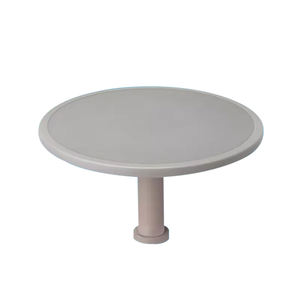Discover Premium Ceramic Products | Durability & Elegance United | Advanced Ceramics
PRODUCT PARAMETERS
Description
Overview of aluminum nitride ceramics
Aluminum Nitride Ceramic is an advanced ceramic material with aluminum nitride as the main component. It has been widely used in electronics, optics, and mechanics due to its unique properties.
Features of aluminum nitride ceramics
High thermal conductivity: Aluminum nitride ceramics have relatively high thermal conductivity, usually between 170-260 W/m·K, which makes it an excellent heat dissipation material. It is especially suitable for electronic devices that require efficient heat dissipation, such as substrate materials for power semiconductor devices.
Good electrical insulation: Despite its high thermal conductivity, aluminum nitride ceramics are excellent insulators of electricity, which can effectively prevent current leakage and ensure the safe operation of electronic components.
Low dielectric constant and dielectric loss: These characteristics make aluminum nitride ceramics very suitable for use in high-frequency circuits because it can reduce energy loss during signal transmission.
High temperature resistance: Aluminum nitride ceramics can maintain structural stability and strength at extremely high temperatures. Its melting point is about 2800°C, so it is suitable for applications in high temperature environments.
Low thermal expansion coefficient: Compared with semiconductor materials such as silicon, aluminum nitride has a lower thermal expansion coefficient, which means it has better dimensional stability when the temperature changes, which helps improve packaging reliability.
Corrosion resistance: Aluminum nitride ceramics have good chemical stability to most molten metals and are not easily oxidized or corroded, allowing them to perform well in harsh environments.
High mechanical strength: Although not as hard as some other types of ceramic materials, aluminum nitride ceramics still provide enough mechanical strength to allow them to be used in many structural applications.
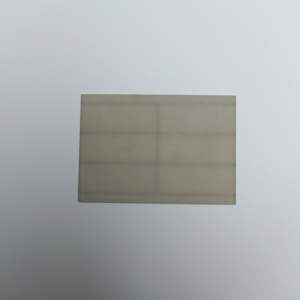
(High Heat Conductivity AlN Aluminum Nitride Ceramic Sheet)
Specifications of High Heat Conductivity AlN Aluminum Nitride Ceramic Sheet
High Heat Conductivity AlN Light Weight Aluminum Nitride Ceramic Sheet is a specialized product developed for advanced thermal monitoring applications. It integrates high thermal conductivity with strong electric insulation, making it perfect for usage in electronic devices, LED lighting, power modules, and semiconductor equipment. The product makes sure efficient heat dissipation while maintaining integrity in demanding environments.
The thermal conductivity of AlN ceramic sheets ranges in between 170-200 W/mK. This value exceeds standard alumina ceramics by nearly 10 times, permitting quick heat move far from sensitive elements. The low thermal growth coefficient (4.5 × 10 ⁻⁶/ ° C )matches silicon and other semiconductor products, lowering anxiety at adhered user interfaces during temperature variations.
AlN ceramic sheets provide excellent electrical insulation, with a dielectric stamina over 15 kV/mm. This protects against current leak even in high-voltage setups. The product’s mechanical strength is durable, with flexural toughness getting to 300-400 MPa. It withstands fracturing under mechanical load, ensuring long-term resilience.
Chemical stability is another crucial attribute. AlN ceramic sheets endure deterioration from liquified metals, acids, and antacid. They run efficiently in temperatures approximately 1400 ° C in inert atmospheres, maintaining structural integrity without deteriorating. Surface level of smoothness (Ra ≤ 0.4 μm) guarantees limited bonding with metals or substratums, lessening thermal resistance at joints.
Customization alternatives include densities from 0.3 mm to 15 mm and evaluate to 200 mm x 200 mm. Machining solutions allow precise exploration, cutting, or forming to fulfill certain style requirements. The material works with thin-film metallization processes, enabling direct integration right into circuits or warmth sinks.
Applications encompass aerospace, automobile, and renewable energy systems. In electric cars, AlN sheets manage heat in battery modules and power converters. For high-power LEDs, they protect against getting too hot, prolonging device life expectancy. Semiconductor makers use them as substrates for wafer handling due to their purity and thermal performance.
Production includes warm pressing or sintering high-purity aluminum nitride powder. Stringent quality control makes sure very little porosity and consistent residential properties. The sheets are free of heavy steels, abiding by RoHS and get to environmental requirements. Packaging alternatives consist of anti-static materials to prevent contamination throughout handling.
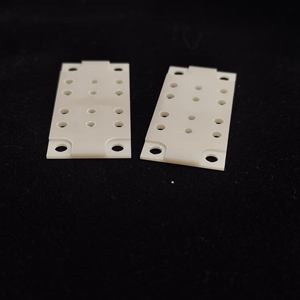
(High Heat Conductivity AlN Aluminum Nitride Ceramic Sheet)
Applications of High Heat Conductivity AlN Aluminum Nitride Ceramic Sheet
High warmth conductivity Aluminum Nitride (AlN) ceramic sheets are sophisticated products extensively utilized in industries needing reliable thermal monitoring. These sheets master moving warmth while maintaining electrical insulation, making them excellent for high-performance applications. Their thermal growth very closely matches silicon, minimizing mechanical anxiety in digital tools. This home ensures stable operation under severe temperature level adjustments.
In electronic devices making, AlN ceramic sheets work as substrates for circuits and warmth spreaders. They quickly eliminate warmth from power amplifiers, microprocessors, and high-frequency devices. This prevents overheating and prolongs component lifespan. The material’s electric insulation additionally safeguards delicate parts from brief circuits.
The LED industry relies upon AlN sheets for high-power lighting systems. They take care of warm generated by intense light outcome, stopping illumination loss and shade changes. This makes them ideal for vehicle headlights, streetlights, and industrial lighting. Regular thermal control helps LEDs maintain effectiveness in time.
Power modules like IGBTs and MOSFETs make use of AlN sheets to take care of extreme heat in energy conversion systems. The ceramic sheets separate high-voltage parts while dissipating heat from transistors. This improves dependability in solar inverters, electrical vehicle drives, and commercial electric motor controls.
Semiconductor tools suppliers use AlN sheets in wafer processing phases. The material endures corrosive gases and plasma environments during etching or chemical vapor deposition. Its chemical security protects against contamination, making certain tidy manufacturing problems.
In electric automobiles, AlN sheets cool onboard chargers and battery administration systems. They deal with fast warmth accumulation throughout quick charging and high-power procedure. Aerospace applications consist of thermal monitoring for avionics and radar systems, where temperature variations prevail.
Laser modern technology benefits from AlN’s capacity to cool high-energy laser diodes. Telecom and medical lasers use these sheets to keep exact light beam top quality. RF and microwave systems incorporate AlN to minimize signal loss triggered by warmth in communication tools.
The mix of high thermal conductivity, electrical insulation, and mechanical strength makes AlN ceramic sheets a vital product throughout sophisticated technologies. Industries prioritize them for solutions requiring both performance and toughness.
Company Introduction
Advanced Ceramics founded on October 17, 2014, is a high-tech enterprise committed to the research and development, production, processing, sales and technical services of ceramic relative materials and products.. Since its establishment in 2014, the company has been committed to providing customers with the best products and services, and has become a leader in the industry through continuous technological innovation and strict quality management.
Our products includes but not limited to Silicon carbide ceramic products, Boron Carbide Ceramic Products, Boron Nitride Ceramic Products, Silicon Carbide Ceramic Products, Silicon Nitride Ceramic Products, Zirconium Dioxide Ceramic Products, Quartz Products, etc. Please feel free to contact us.(nanotrun@yahoo.com)

Payment Methods
T/T, Western Union, Paypal, Credit Card etc.
Shipment Methods
By air, by sea, by express, as customers request.

5 FAQs of High Heat Conductivity AlN Aluminum Nitride Ceramic Sheet
What makes high heat conductivity AlN ceramic sheets different from regular ceramics? AlN ceramic sheets move heat faster than most ceramics. This is because aluminum nitride has a tightly bonded structure. Heat passes through it quickly. Regular ceramics like alumina move heat slower. AlN is better for cooling high-power devices.
Where are AlN ceramic sheets commonly used? These sheets are used in electronics, LED lighting, and power modules. They cool parts like semiconductor chips and laser diodes. They work in electric vehicles and aerospace systems too. Their heat control stops devices from overheating.
How does AlN compare to materials like beryllium oxide? AlN is safer. Beryllium oxide is toxic if inhaled. AlN avoids this risk. Both materials conduct heat well. AlN is more expensive than alumina but cheaper than beryllium oxide. It balances cost and performance.
Can AlN ceramic sheets handle extreme temperatures? Yes. They work in temperatures up to 1400°C. They don’t crack under rapid heating or cooling. This makes them good for industrial furnaces or engine parts. They stay stable in harsh conditions.
Are there downsides to using AlN ceramic sheets? They cost more than standard ceramics. Machining them requires specialized tools. Small cracks can form if handled roughly. They aren’t ideal for low-budget projects. Proper installation matters to avoid damage.
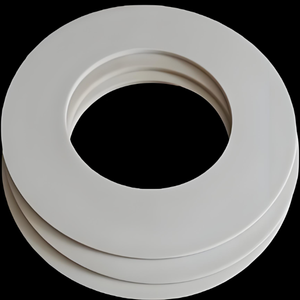
(High Heat Conductivity AlN Aluminum Nitride Ceramic Sheet)
REQUEST A QUOTE
RELATED PRODUCTS
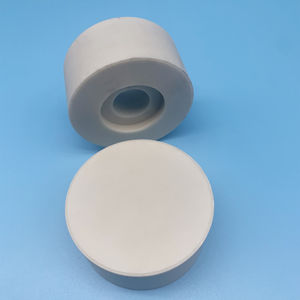
ALN Aluminum Nitride ALN Ceramic Tube
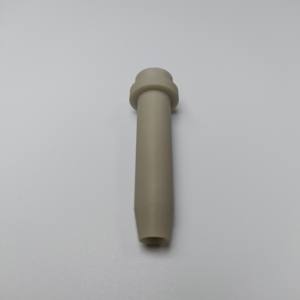
Alumina Nitride ALN Metallized Thin Film PCB Ceramic Substrate
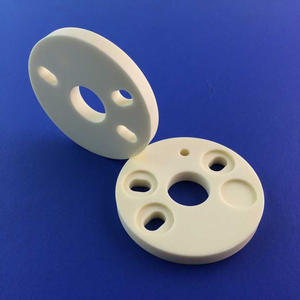
High Purity 99.9% AlN Powder Aluminum Nitride Powder for Ceramics
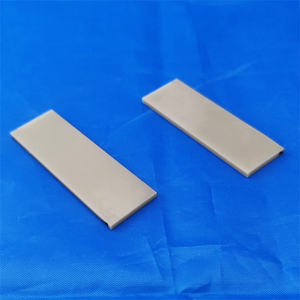
High Heat Conductivity AlN Aluminum Nitride Ceramic Sheet
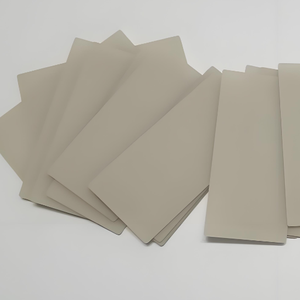
0.5/ 0.635/ 0.1mm Thickness ALN Ceramic Plate Alumina Nitride Ceramic Substrate
